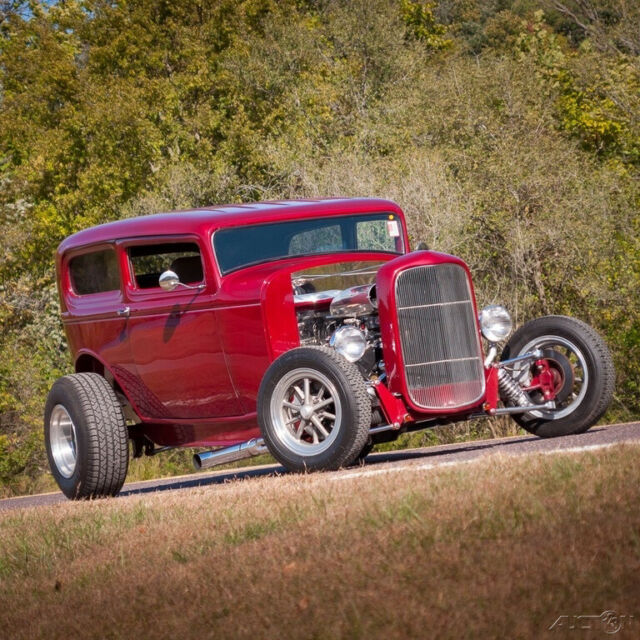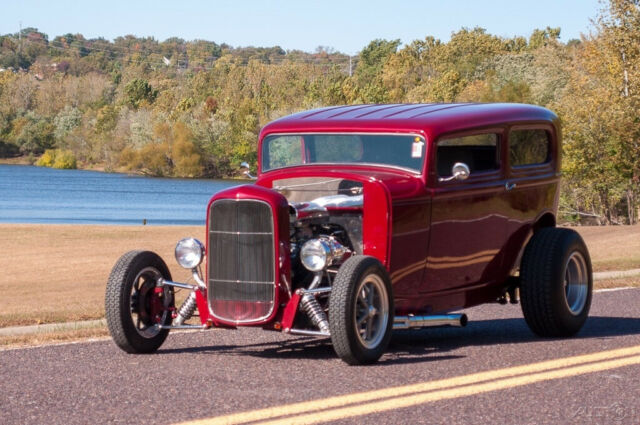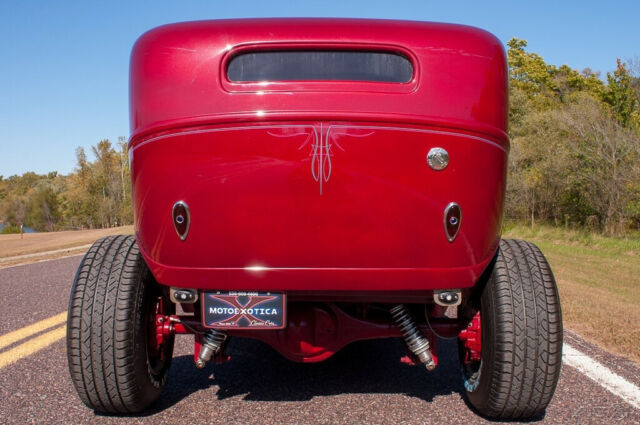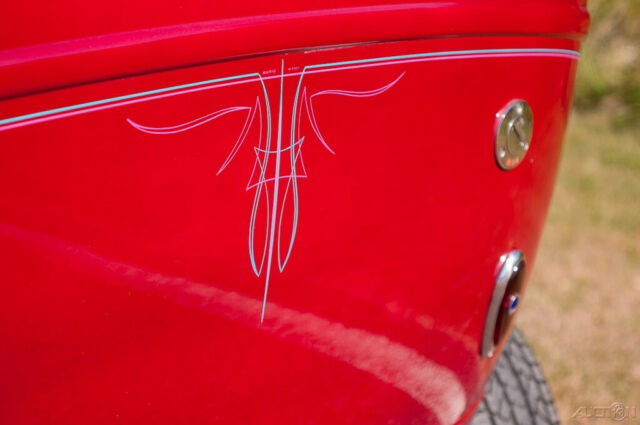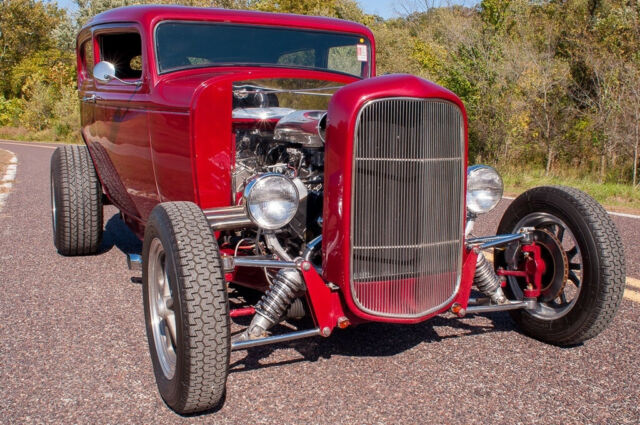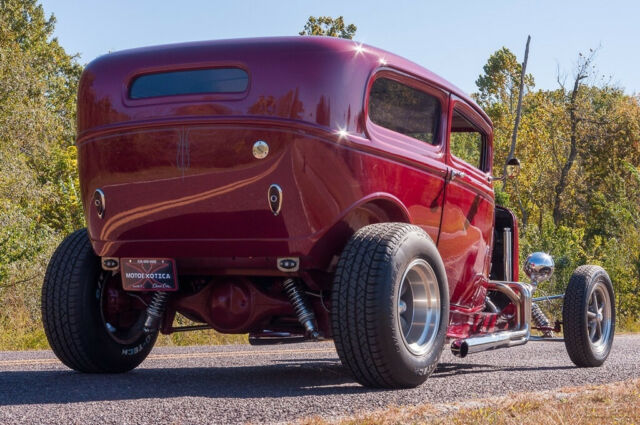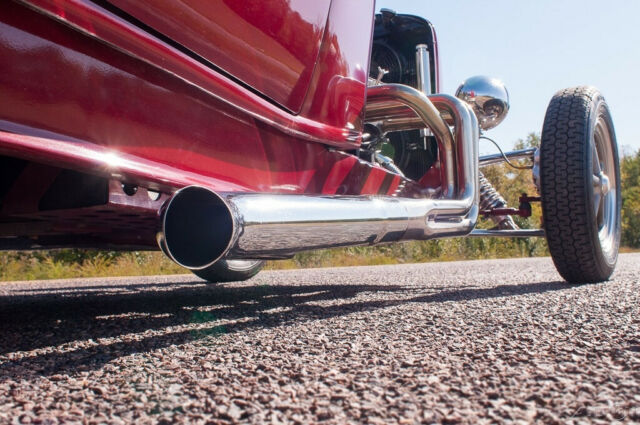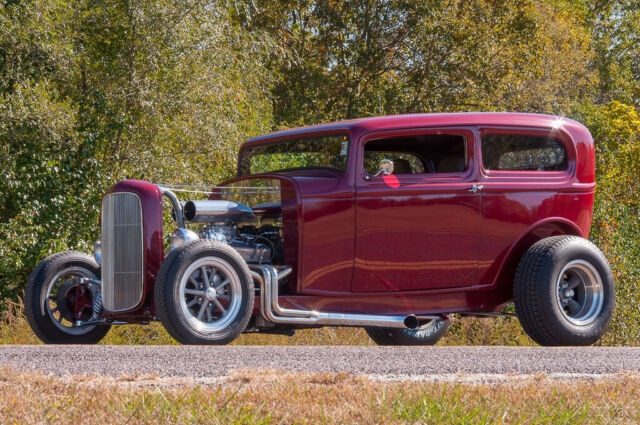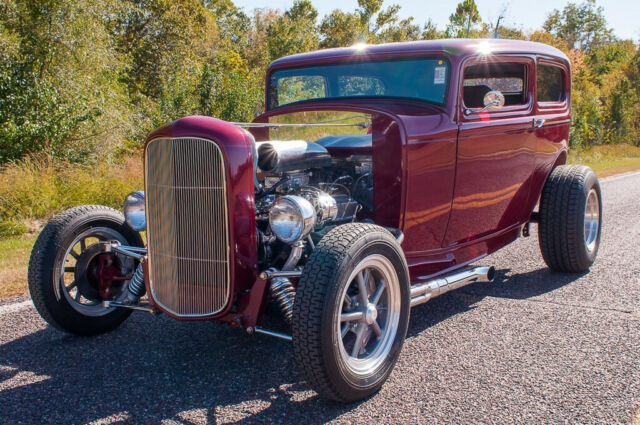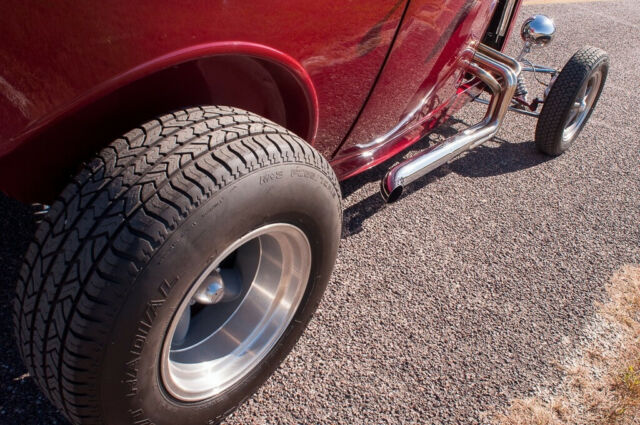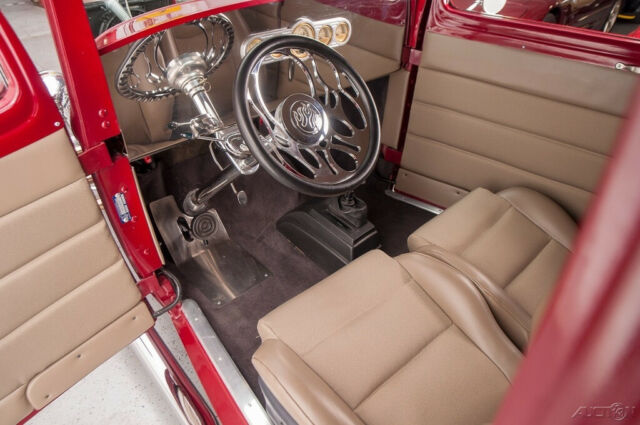1932 Ford Custom Sedan
- Location: Fenton, Missouri, United States
- Make: Ford
- Model: Custom
- SubModel: Custom Sedan
- Type: Sedan
- Trim: Sedan
- Doors: 2 Doors
- Year: 1932
- Mileage: 336
- VIN: UTP05845
- Color: Red
- Engine size: 350 CID small block V-8
- Number of cylinders: 8
- Transmission: Automatic
- Drive type: RWD
- Interior color: Gray
- Vehicle Title: Clear
1932 Ford Custom Sedan Description
1932 Ford Custom Sedan• Titled as a 1932 Ford Model B• 350 CID small-block Chevrolet V-8 engine• Quick Fuel 650 carburetor• 447/447 camshafts• Turbo Hydra-Matic 700R4 four-speed automatic transmission • Ford nine-inch rear end, four-wheel disc brakes, independent front suspension • Dual electric engine fans and B&M floor-mounted shift lever• Maroon exterior and tan interior You’ll be forgiven if you hear the words from the Beach Boys’ song, “Little Deuce Coupe” as you look at this car, a 1932 Ford Custom. If you want a custom Ford from the early 1930s with modern power and classic looks, you’ve found the right car. Its maroon paint and trim are in overall very good condition, it has a straight body and an extremely tidy and open engine bay. In that bay is a 350 CID small-block Chevrolet V-8 engine with a Quick Fuel 650 carburetor, 447/447 camshafts and the engine breathes via dual side exit exhausts. This engine has two electric cooling fans stacked behind the grille. Backing this motor is a Turbo Hydra-Matic 700R4 four-speed automatic transmission and a Ford nine-inch rear end. Driver convenience features include four-wheel disc brakes and independent front suspension. This Ford rolls on Michelin XZX radials, size 145SR15 in front and on TurboTech G/T radials in back, size 255/70R15. Each tire is mounted on multi-spoke alloy wheels, American Racing ones in the rear. The tires and wheels present well, with good tread and no obvious road rash. Inside, the tan buckets seats are in very good order while the complimenting brown carpet is in good, original shape. The aftermarket steering wheel, B&M floor-mounted shift lever and updated gauge faces in the maroon metal dashboard combine to present a classy interior but the horn is inoperable. The tan inner door panels echo the rest of the interior’s theme. Fords of 1932–1934 are extremely popular with hot rodders. During the years after WWII, Model Bs and 18s were frequently rodded. This continued into the 1960s on a large scale. Today, the roadster, sedans and coupes are the most sought-after body styles, as these were popular for street rods and hotrods; unmodified examples have become rare.Since the 1970s, 1932 bodies and frames have been reproduced either in fiberglass or lately in steel, which has helped resolve sheetmetal shortages and increased the number of rods being created or restored. These are often very expensive; a typical show-quality car may sell for $60,000 or more. This is also ironic in that hot-rodding had its origins in young men buying cheap and plentiful 20+ year-old cars for their low cost and modifying them for higher performance at low cost. A deuce coupe (deuce indicating the year “2” in 1932) is a 1932 Ford coupe. The Model 18 coupe with its more powerful V-8 engine was more popular than the four-cylinder Model B coupe. In the 1940s, the ‘32 Ford became an ideal hot rod, being plentiful and cheap enough for young men to buy and available with a stylish V-8 engine. Rodders would strip weight off this readily available car and “hop up” or customize the engine.They came in two body styles, the more common five-window and the rarer suicide door three-window. The iconic stature of the 1932-vintage Ford in hot rodding inspired The Beach Boys to write their hit 1963 song “Little Deuce Coupe” and also named one of their three 1963 albums after the car. The deuce coupe was also featured as the pivotal street racing car in the 1973 hit film, “American Graffiti.” Typical of builds from before World War II were ‘35 Ford wire-spoke wheels. Immediately postwar, most rods changed from mechanical to hydraulic (“juice”) brakes and from bulb to sealed-beam headlights. The “gow job” morphed into the “hot rod” in the early to middle 1950s. The mid-1950s and early 1960s custom deuce was typically fenderless and steeply chopped, and almost all Ford (or Mercury, with the 239 CID flathead V-8 introduced in 1939).A Halibrand quick-change rearend was also typical and an Edelbrock intake manifold or Harman and Collins ignition magneto would not be uncommon. Reproduction spindles, brake drums and backing based on the 1937s remain available today. Aftermarket “flatty” (flathead) cylinder heads were available from Barney Navarro, Vic Edelbrock and Offenhauser. The first intake manifold Edelbrock sold was a “slingshot” design for the flathead V-8.Front suspension hairpins were adapted from sprint cars, such as the Kurtis Krafts. This is the iconic, quintessential American Classic Hot Rod, Ford’s 1932 Coupe. If you want to relive your younger days, swing by MotoeXotica Classic Cars today to see it for yourself. VIN: UTP05845 This car is currently located at our facility in St. Louis, Missouri. Current mileage on the odometer shows xx,xxx miles. It is sold as is, where is, on a clean and clear, mileage exempt title.GET OUT AND DRIVE!!! Note: Please see full terms and conditions listed below that pertain to the purchase of any said vehicle, thank you.
More Ford classic cars for sale
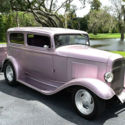 Impressive Custom 1932 Ford Sedan 327ci Auto Air Custom Matching Trailer Amazing
Impressive Custom 1932 Ford Sedan 327ci Auto Air Custom Matching Trailer Amazing
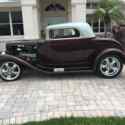 1932 Ford 3 Window Coupe Sedan Red RWD Automatic Custom
1932 Ford 3 Window Coupe Sedan Red RWD Automatic Custom
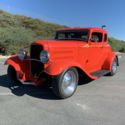 1932 Ford Custom Hotrod 10560 Miles Red Sedan Automatic
1932 Ford Custom Hotrod 10560 Miles Red Sedan Automatic
 1932 Ford 2-Door Sedan Street Rod,ZZ4 motor,700 R4,Vintage Air,Custom frame
1932 Ford 2-Door Sedan Street Rod,ZZ4 motor,700 R4,Vintage Air,Custom frame
 1932 Ford 2-Door Sedan Street Rod,ZZ4 motor,700 R4,Vintage Air, Custom frame
1932 Ford 2-Door Sedan Street Rod,ZZ4 motor,700 R4,Vintage Air, Custom frame
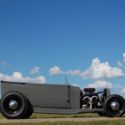 1929 Ford Model A Tub - Custom Built from a Tudor Sedan on 1932 frame hot rod
1929 Ford Model A Tub - Custom Built from a Tudor Sedan on 1932 frame hot rod
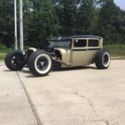 1929 FORD MODEL A TUDOR SEDAN CHOPPED HOT ROD RAT ROD CUSTOM 1932 1931 coupe c10
1929 FORD MODEL A TUDOR SEDAN CHOPPED HOT ROD RAT ROD CUSTOM 1932 1931 coupe c10
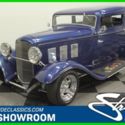 1932 Ford Sedan Sedan 1932 Used Automatic
1932 Ford Sedan Sedan 1932 Used Automatic
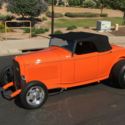 Custom, 1932 Ford Roadster-Street Rod, Arizona Title Clear, Registered as a 1932
Custom, 1932 Ford Roadster-Street Rod, Arizona Title Clear, Registered as a 1932
 1932 ford tudor sedan Ford 2 door Sedan california barn find 5 3 window
1932 ford tudor sedan Ford 2 door Sedan california barn find 5 3 window
 Impressive Custom 1932 Ford Sedan 327ci Auto Air Custom Matching Trailer Amazing
Impressive Custom 1932 Ford Sedan 327ci Auto Air Custom Matching Trailer Amazing
Year: 1932
Mileage: 1
Mileage: 1
 1932 Ford 3 Window Coupe Sedan Red RWD Automatic Custom
1932 Ford 3 Window Coupe Sedan Red RWD Automatic Custom
Year: 1932
Mileage: 7389
Mileage: 7389
 1932 Ford Custom Hotrod 10560 Miles Red Sedan Automatic
1932 Ford Custom Hotrod 10560 Miles Red Sedan Automatic
Year: 1932
Mileage: 10560
Mileage: 10560
 1932 Ford 2-Door Sedan Street Rod,ZZ4 motor,700 R4,Vintage Air,Custom frame
1932 Ford 2-Door Sedan Street Rod,ZZ4 motor,700 R4,Vintage Air,Custom frame
Year: 1932
Mileage: 8200
Mileage: 8200
 1932 Ford 2-Door Sedan Street Rod,ZZ4 motor,700 R4,Vintage Air, Custom frame
1932 Ford 2-Door Sedan Street Rod,ZZ4 motor,700 R4,Vintage Air, Custom frame
Year: 1932
Mileage: 7500
Mileage: 7500
 1929 Ford Model A Tub - Custom Built from a Tudor Sedan on 1932 frame hot rod
1929 Ford Model A Tub - Custom Built from a Tudor Sedan on 1932 frame hot rod
Year: 1929
Mileage: 500
Mileage: 500
 1929 FORD MODEL A TUDOR SEDAN CHOPPED HOT ROD RAT ROD CUSTOM 1932 1931 coupe c10
1929 FORD MODEL A TUDOR SEDAN CHOPPED HOT ROD RAT ROD CUSTOM 1932 1931 coupe c10
Year: 1929
Mileage: 2,500
Mileage: 2,500
 1932 Ford Sedan Sedan 1932 Used Automatic
1932 Ford Sedan Sedan 1932 Used Automatic
Year: 1932
 Custom, 1932 Ford Roadster-Street Rod, Arizona Title Clear, Registered as a 1932
Custom, 1932 Ford Roadster-Street Rod, Arizona Title Clear, Registered as a 1932
Year: 1932
Mileage: 15000
Mileage: 15000
 1932 ford tudor sedan Ford 2 door Sedan california barn find 5 3 window
1932 ford tudor sedan Ford 2 door Sedan california barn find 5 3 window
Year: 1932
Mileage: 111,111,111
Mileage: 111,111,111
